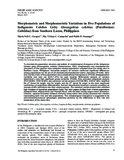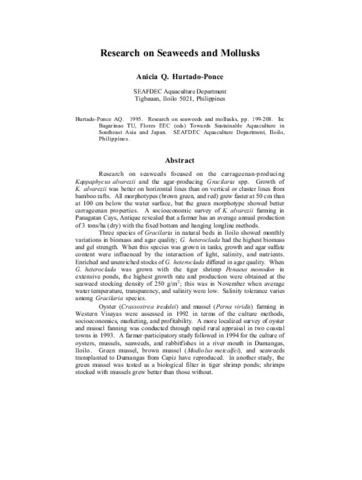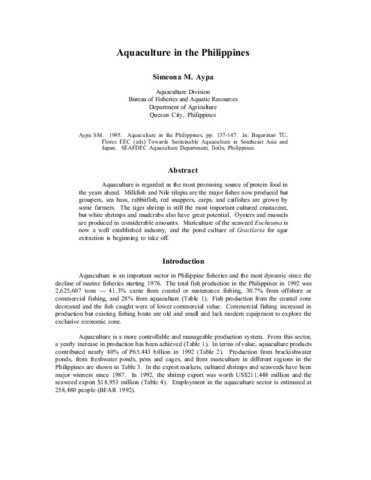| dc.contributor.author | Primavera, Jurgenne H. | |
| dc.contributor.author | Agbayani, Renato F. | |
| dc.contributor.editor | Phan, Nguyen Hong | |
| dc.contributor.editor | Ishwaran, Natarajan | |
| dc.contributor.editor | Hoang, Thi San | |
| dc.contributor.editor | Nguyen, Hoang Tri | |
| dc.contributor.editor | Mai, Sy Tuan | |
| dc.date.accessioned | 2011-06-22T09:35:43Z | |
| dc.date.available | 2011-06-22T09:35:43Z | |
| dc.date.issued | 1997 | |
| dc.identifier.citation | Primavera, J. H., & Agbayani, R. F. (1997). Comparative strategies in community-based mangrove rehabilitation programs in the Philippines. In N. H. Phan, N. Ishwaran, T. S. Hoang, H. T. Nguyen, & S. T. Mai (Eds.), Community Participation in Conservation, Sustainable Use and Rehabilitation of Mangroves in Southeast Asia. Proceedings of the ECOTONE V, 8-12 January 1996, Ho Chi Minh City, Vietnam (pp. 229–243). Hanoi, Vietnam: United Nations Educational Scientific and Cultural Organisation; Japanese Man and the Biosphere National Committee; Mangrove Ecosystem Research Centre. | en |
| dc.identifier.uri | http://hdl.handle.net/10862/420 | |
| dc.description.abstract | Philippine Mangroves have decreased from around 500,000 ha at the turn of the century to 132,000 ha in 1990. Given the varied and important socioeconomic and ecological functions of mangroves including harvest of forestry and fishery products, coastal protection, erosion control and pollution abatement, there is a need to rehabilitate degraded areas. Half of the mangrove areas lost in the las three decades can be traced to the construction of 141'000 ha of brackish water ponds monocropped to mik fish or shrimp. Integrated aquasilviculture is an alternative, although experimental, technology that combines both the fisheries and forestry functions of the mangrove ecosystem.This paper describes four models of mangrove rehabilitation and conservation with varying degrees of community participation in the philippines-monoculture mangrove planting in Kalibo, Aklan; mixed species planting in Silay City, Negros Occidental; aquasilviculture in Puerto Galera, Mindoro Oriental (family) and in Hinobaan, Negros Occidental (association)- and compares their strengths, weaknesses, opportunities and threats. | en |
| dc.language.iso | en | en |
| dc.publisher | United Nations Educational Scientific and Cultural Organisation | en |
| dc.publisher | Japanese Man and the Biosphere National Committee | en |
| dc.publisher | Mangrove Ecosystem Research Centre | en |
| dc.subject | Mangrove | en |
| dc.subject | Conservation | en |
| dc.subject | Sociological aspects | en |
| dc.subject | Comparative studies | en |
| dc.subject | Philippines -- Aklan -- Kalibo | en |
| dc.subject | Philippines -- Negros Occidental -- Silay City | en |
| dc.subject | Philippines -- Negros Occidental -- Hinobaan | en |
| dc.subject | Philippines -- Mindoro Oriental -- Puerto Galera | en |
| dc.subject.lcc | VF SP 224 | |
| dc.title | Comparative strategies in community-based mangrove rehabilitation programs in the Philippines | en |
| dc.type | Conference paper | en |
| dc.citation.spage | 229 | |
| dc.citation.epage | 243 | |
| dc.citation.conferenceTitle | Community Participation in Conservation, Sustainable Use and Rehabilitation of Mangroves in Southeast Asia. Proceedings of the ECOTONE V, 8-12 January 1996, Ho Chi Minh City, Vietnam | en |



